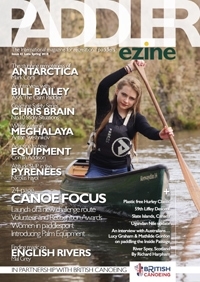With spring right around the corner, you may start to see the first signs of it. From the water you get the opportunity to see plants, birds, and other wildlife up close and personal. With this view you may be able to spot the tiny changes that start to happen as the ground warms up and the sun shines for longer. So here are a couple of our favourite signs that spring is coming.

Plants
Willow Tree Buds
The warmth and extra sunlight spurs on the willow trees to start producing their leaves. You will see small green buds beginning to form on the long swooping branches of the willow tree. The buds make up some of the first greenery of the spring.
Alder Trees
The Alder tree produces flowers, but not as you may expect. They grow in little catkins, small clusters of flowers that may be mistaken for fruit from afar. These begin to appear in the early days of spring, so are a telltale sign.

Snowdrops
Coming up from the ground you’ll spot snowdrops starting to pop up. These flowers are at home on frosty forest floors. Their brilliant white flowers are a refreshing break in the browns and oranges that have dominated the winter landscape.
Hazel Catkins
These look similar to the Alder tree catkins, clusters of small flowers in a bud. Up close you may be able to see the little red filaments coming out the flowers. If pollinated these turn into hazelnuts later on in the year.

Marsh Marigolds
These bright yellow flowers are conspicuous in damper areas, such as marsh’s, ponds, and woodlands. Looking similar to buttercups, the flowers are considered by some to bring luck when brought into the home in early spring.
Primroses
Standing only 10cm tall, the primrose flowers are vigorous plants that multiply across the ground adding more colour each year. Most commonly a dark blue or deep purple in woodland, these flowers are a strong contrast of colours.

Birds
Woodpeckers
The great spotted woodpecker is the most common in the UK. Standing at 22cm to 23cm tall, the great spotted woodpecker is black and white with some stunning red feathers underneath their tail. There are other woodpeckers that you might see or hear in the UK.
Great tits
These are the largest of the tit family that can be identified by their yellow and green glossy feathers. They are a woodland bird that has adapted to urban areas. You will begin to notice them on their own as they leave the joint flocks they make over winter.

Song Thrushes
As the name suggests, these birds are known for their song. With repeated musical notes, their song is distinct. Once you have heard their song you might be able to spot their dark brown spotted feathers as they fly overhead.
Swifts
The swift has an iconic shape that is easily recognisable. They are also incredibly flyers that rarely come to ground. Having spent the winter in Africa, swifts begin to reappear in the UK skies in early spring.

Cuckoos
Although they look unsuspecting with their blue-grey feathers, the cuckoo is a sneaky bird that lays its eggs in other birds nests for them to raise. Recent decline in its population has seen it places on the red list of the 2021 UK conservation list. So if you manage to spot one then you are seeing a rare sign of early spring.
Mallards
The most common duck you will see in the UK waters, with their green head, yellow beak, and grey back. You will begin to notice more and more of them as early spring sets in and the waters begin to slowly warm up.

Download our Spring Spotters Checklist and see how many you can spot. Keep a track of what you spot on your different paddles and you’ll be able to see spring setting in. Don’t get too close to the wildlife on your paddle as you don’t want to disturb it. Check out the Paddlers Code for a guide on paddling around wildlife.


 Go Paddling
Go Paddling Clear Access Clear Waters
Clear Access Clear Waters Paddles Up Training
Paddles Up Training Clubhouse
Clubhouse Services Login
Services Login

